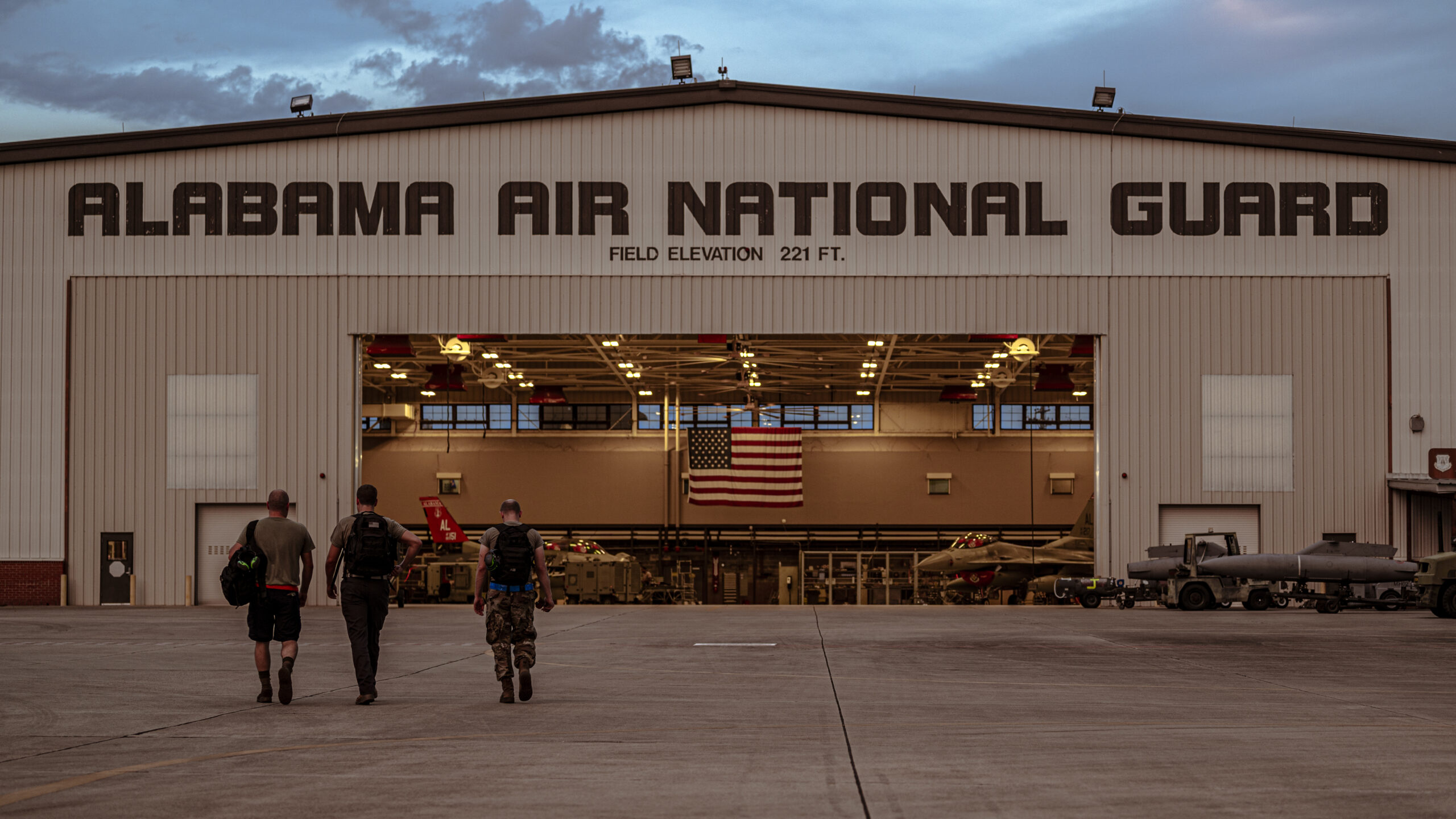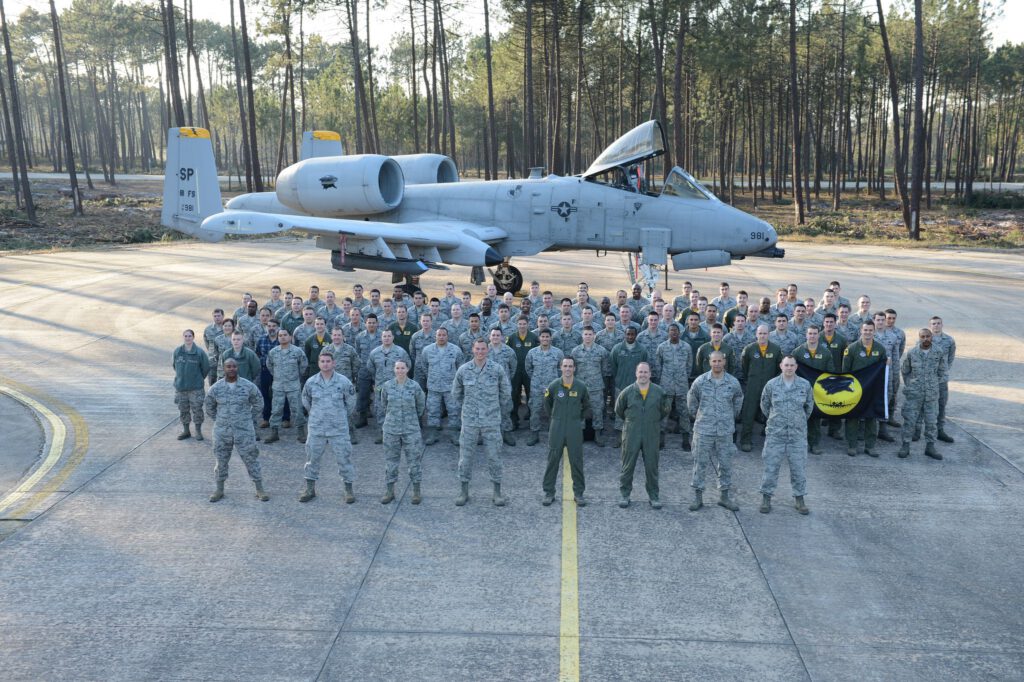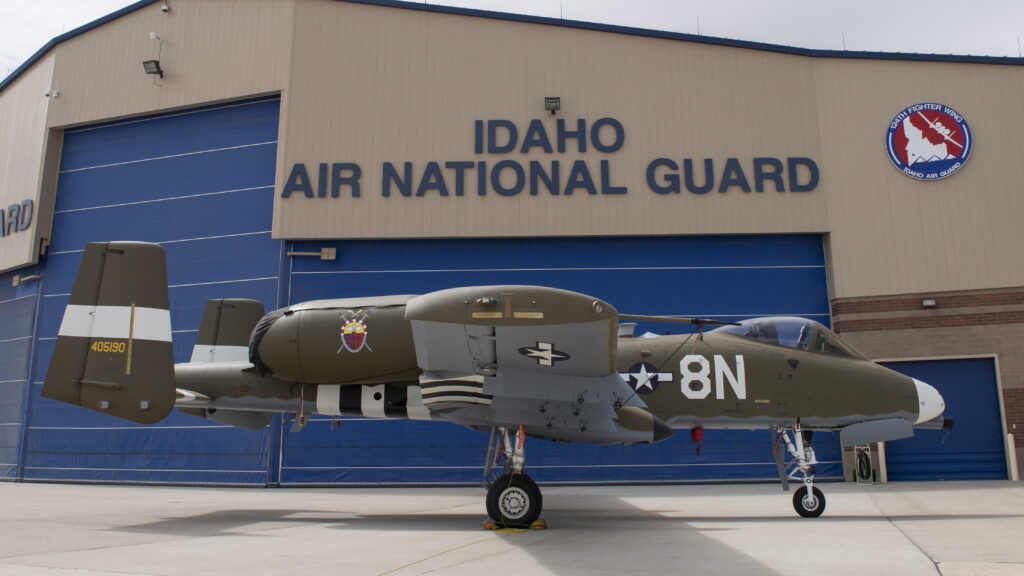The Alabama Air National Guard (AL ANG) is the aerial militia of the State of Alabama, United States of America. It is, along with the Alabama Army National Guard, an element of the Alabama National Guard.
As state militia units, the units in the Alabama Air National Guard are not in the normal United States Air Force chain of command unless federalized. They are under the jurisdiction of the governor of Alabama through the office of the Alabama Adjutant General unless they are federalized by order of the president of the United States. The Alabama Air National Guard is headquartered in Montgomery, Alabama.
On 24 May 1946, the United States Army Air Forces, in response to dramatic postwar military budget cuts imposed by President Harry S. Truman, allocated inactive unit designations to the National Guard Bureau for the formation of an Air Force National Guard. These unit designations were allotted and transferred to various State National Guard bureaus to provide them unit designations to re-establish them as Air National Guard units. The modern Alabama ANG received federal recognition on 25 November 1946 as the 106th Bombardment Squadron (Light) at Birmingham MAP (Sumpter Smith Field). It was equipped with B-26B/C Invaders and was assigned to Tactical Air Command. 18 September 1947, however, is considered the Alabama Air National Guard’s official birth concurrent with the establishment of the United States Air Force as a separate branch of the United States military under the National Security Act.
On 1 October 1947 the 117th Fighter Group allotted by the National Guard Bureau, extended federal recognition and activated at Birmingham, with the 106th Bomb Squadron being assigned to the unit. The 160th Fighter Squadron at Montgomery was authorized by the National Guard Bureau and recognized also on 1 October 1947. The 160th was equipped with the F-51D Mustang and its mission was the air defense of the state. On 15 October 1962, the 160th Tactical Reconnaissance Squadron was authorized to expand to a group level, and the 187th Tactical Reconnaissance Group was established by the National Guard Bureau. The 160th TRS becoming the group’s flying squadron. “Red Tails” F-16 Fighting Falcons of the 100th Fighter Squadron in Montgomery
In 2007, the Alabama legislature requested the National Guard Bureau to allow the Alabama Air National Guard 160th Fighter Squadron to be re-designated as the 100th Fighter Squadron so the state could honor the legacy of the World War II Tuskegee Airmen. This was obtained from the Air Force and on 12 September 2009, the 100th Flying Training Squadron was inactivated. The designation was transferred to the National Guard Bureau by the Air Force and it was allotted to the Alabama ANG. As a result, the 160th Fighter Squadron was inactivated, and the new 100th Fighter Squadron assumed its personnel, equipment and aircraft.
Today, the 117th Air Refueling Wing (117 ARW) provides aerial refueling support to Air Force, Navy and Marine Corps and allied nation aircraft. The 187th Fighter Wing (187 FW) operated the F-16 Fighting Falcon and deploys around the world as part of Air Expeditionary Forces. On April 21, 2023, the 187th Fighter Wing retired its inventory of F-16s after 35 years of service. Preparations began to take delivery of new production F-35A Lightning II aircraft, with initial delivery scheduled for December 2023.
After the 11 September 2001 terrorist attacks on the United States, elements of every Air National Guard unit in Alabama has been activated in support of the Global War on Terrorism. Flight crews, aircraft maintenance personnel, communications technicians, air controllers and air security personnel were engaged in Operation Noble Eagle air defense overflights of major United States cities. Also, Alabama ANG units have been deployed overseas as part of Operation Enduring Freedom in Afghanistan and Operation Iraqi Freedom in Iraq as well as other locations as directed.
The Alabama Air National Guard consists of the following major units:
117th Air Refueling Wing
The 117th Fighter Group was extended federal recognition on 1 October 1947 at Birmingham Municipal Airport, Alabama. In the fall of 1950, the group was called to active federal service. The group moved to Lawson Air Force Base, Georgia and began to train as a tactical reconnaissance unit. However, the group and its support organizations were not organized under the Wing Base organization of the regular Air Force, which combined tactical and support organizations under a single headquarters.
To provide a single headquarters for operational and support units of the 117th Group, the Air Force organized the 117th Tactical Reconnaissancw Wing at Lawson at the end of November 1950, assigning the 117th Tactical Reconnaissance Group, along with the new 117th Maintenance and Supply, 117th Air Base and 117th Medical Groups. At Lawson, the 112th Tactical Reconnaissance Squadron retained its existing Douglas RB-26C Invaders, becoming the wing’s night reconnaissance unit. Tactical Air Command equipped the 157th and 160th Tactical Reconnaissance Squadrons with Lockheed RF-80A Shooting Star daylight photo-reconnaissance jet aircraft. The wing then began what was then believed to be a short transition training period. The original plan was to deploy the 117th to France and reinforce United States Air Forces in Europe at a new base in France, Toul-Rosières Air Base. However Toul Air Base was still under construction, and delays in France for several reasons forced the 117th to remain at Lawson for over a year until finally receiving deployment orders in January 1952.
The 117th arrived at Toul Air Base on 27 January 1952. However at the time of the Wing’s arrival, Toul consisted of a sea of mud, and the new jet runway was breaking up and could not support safe flying. The commander of the 117th deemed it uninhabitable and its flying squadrons of the wing were ordered dispersed to West Germany. The 112th Squadron was transferred to Wiesbaden Air Base, the 157th to Fürstenfeldbruck Air Base, and the 160th to Neubiberg Air Base, all in West Germany. The non-flying headquarters and support organizations remained at Toul.
The mission of the 117th was to provide tactical, visual, photographic and electronic reconnaissance by both day and night, as was required by the military forces within the European command. The RF-80’s were responsible for the daylight operations; the RB-26s for night photography. In June 1952, the 117th was involved in Exercise June Primer. This exercise took place in an area bordered by a line drawn from Cherbourg Naval Base to Geneva in the east and in the west by Swiss, Austrian and Russian Occupation Zone of Germany borders.
The two RF-80 squadrons of the 117th had to complete a number of varying missions, including vertical photography of prospective paratroop air drop zones, oblique photos of the Rhine and Danube river bridges, vertical photography of the airfields of Jever, Faßberg, Celle, Sundorf and Gütersloh and various visual missions on behalf of the Seventh Army, including artillery adjustment for the 816th Field Artillery Battalion. The 157th Squadron had had wire recorders fitted to five of its RF-80’s prior to June Primer and these greatly facilitated the latter missions.
By July 1952 facilities at Wiesbaden were becoming very crowded, and it was felt that the B-26’s could fly from the primitive conditions at Toul. The 112th returned to Toul, however the jet-engined RF-80’s remained in West Germany until a new runway was constructed. On 10 July 1952 the 117th Wing was inactivated and its mission, personnel and equipment was taken over by the newly activated 10th Tactical Reconnaissance Wing. The wing was the allotted to the Air National Guard.
Vietnam and late Cold War era
After the squadron re-formed in Birmingham, it re-equipped with RF-84Fs from active-duty squadrons that were receiving the McDonnell RF-101 Voodoo. It continued to fly the Thunderflash reconnaissance aircraft throughout the 1960s. As the RF-84F was not used during the Vietnam War, the 117th Wing was not activated for duty in Southeast Asia, although some pilots from the unit went through transition training to the RF-101C and McDonnell RF-4C Phantom II and were activated for combat duty. In November 1971 the Thunderflashes were retired as they reached the end of their service life and the 117th Group was chosen to be the first Air National Guard unit to receive the RF-4C Phantom II tactical reconnaissance aircraft. The squadron received aircraft being withdrawn from Southeast Asia as part of the United States pullout from the Vietnam War.
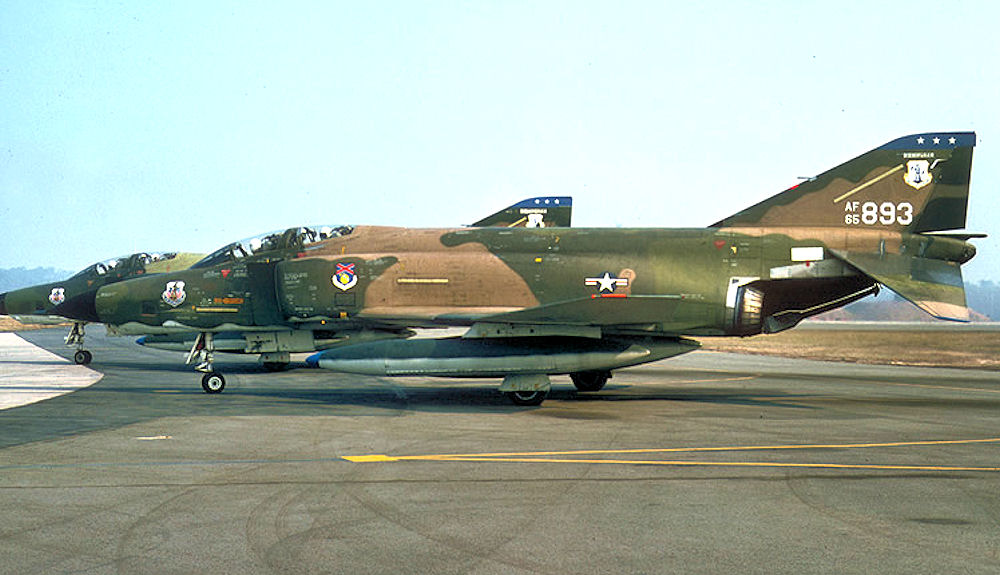
On 9 December 1974 the 117th Tactical Reconnaissance Group inactivated, and support organizations were assigned to the new 117th Combat Support Group. The 106th Tactical Reconnaissance Squadron was assigned directly to the 117th Tactical Reconnaissance Wing
Operation Desert Shield
By early 1989, the operational lifetime of the F-4 Phantom was ending, and the number of RF-4C squadrons serving both on active-duty as well as in Air National Guard units was being reduced. In large part, the RF-4C was being replaced by the Lockheed U-2 TR-1A and TR-1B. The collapse of the Soviet Union and the dissolution of the Warsaw Pact led to accelerated retirement plans, and the retirement of the last of the RF-4Cs was in the planning stages when Iraq invaded Kuwait in August 1990, and further inactivation plans were put on hold. Consequently, the RF-4C was still in service with the USAF at the time of Operation Desert Shield.
When the United States military build-up in the Middle East began following Saddam Hussein’s 2 August 1990 invasion of Kuwait, six wing RF-4Cs equipped with a camera upgrade called the HIAC-1 LOROP (Long Range Oblique Photography) deployed on 24 August 1990 to Al Dhafra Air Base, United Arab Emirates. Their journey to the war zone may have been the longest nonstop flight made by operational warplanes at that time, requiring 16 air-to-air refuelings and spanning 8,000 nautical miles in 15.5 hours. Initially assigned to HQ United States Central Command Air Forces, the wing’s 106th Squadron was later attached to the 35th Tactical Fighter Wing (Provisional).
LOROP was capable of high-resolution images of objects 100 miles away using a high-resolution 66-inch focal length camera that was carried in a centerline pod underneath the aircraft. It was used to conduct prewar surveillance and photo-reconnaissance mapping of Iraqi forces in occupied Kuwait as well as those deployed along the Saudi Arabia-Iraq border. In support of RF-4C operations, numerous airmen and aircraft were used, among them C-21 Learjets, to move finished imagery around the theater. In the Combined Air Operations Center (CAOC) in Riyadh, Saudi Arabia known as the “Black Hole,” coalition air commander Lt. Gen. (later Gen.) Charles “Chuck” Horner scrutinized the RF-4C images of Iraq’s forces every day.
The wing lost aircraft 64-1044 crewed by Major Barry K. Henderson and Lt. Col. Stephen G. Schraam in an operational accident on 8 October 1990. The 106th, however, did not engage in combat operations during Operation Desert Storm, being relieved on 18 December 1990 by the 192d Tactical Reconnaissance Squadron of the Nevada Air National Guard.
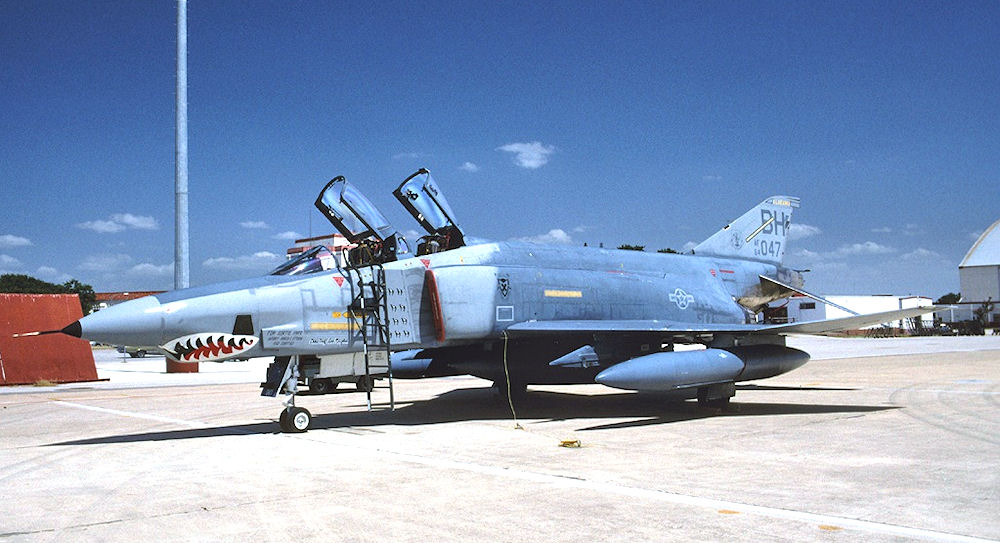
After the end of Desert Storm, the phaseout of the RF-4C was accelerated. On 16 March 1992, the wing was redesignated the 117th Reconnaissance Wing. On 1 June 1992, Tactical Air Command, which had been the gaining command for the wing since 1952, was inactivated. Air Combat Command was activated and became the wing’s active duty gaining command. During 1994, the RF-4Cs were sent to Davis-Monthan Air Force Base, Arizona for retirement at the Aerospace Maintenance and Regeneration Center. On 1 October, the wing was redesignated the 117th Air Refueling Wing, its mission now becoming air refueling with Boeing KC-135 Stratotankers, the first tanker arriving later that month.
After the 9/11 attacks on the United States, the 117th deployed to MacDill Air Force Base, Florida and began refueling F-15 and F-16 aircraft flying combat air patrol missions over major cities in the Southeastern United States as part of Operation Noble Eagle.
In its 2005 Base Realignment and Closure Commission recommendations, the Department of Defense recommended closing the wing and reassigning its aircraft to other National Guard units. This decision was ultimately reversed.
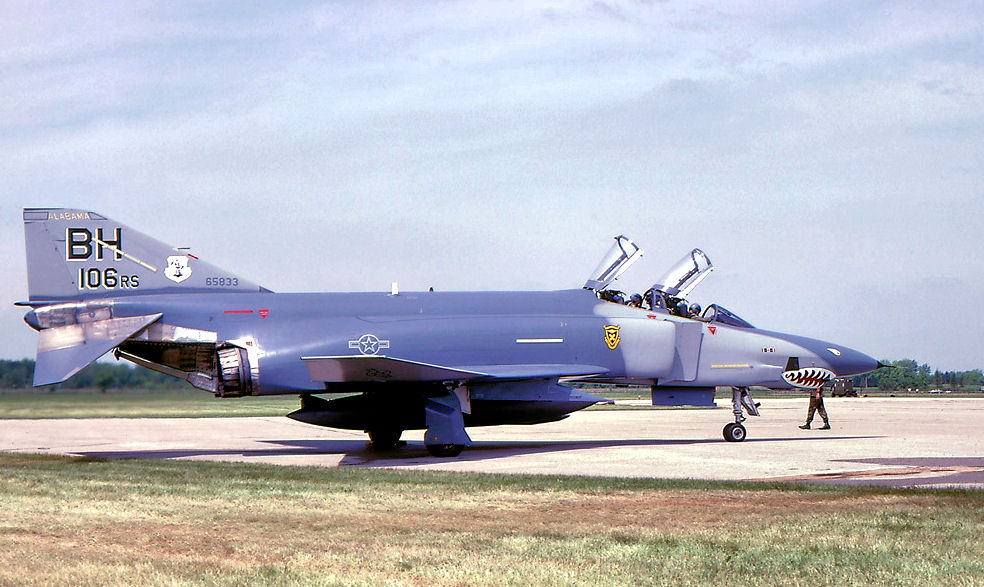
187th Fighter Wing
The roots of the 187th Fighter Wing date back to 1952 when the Alabama Air National Guard organized the 160th Tactical Reconnaissance Squadron in Birmingham, Ala., equipped with the RF-51D Mustangs. The squadron moved to Dannelly Field on January 1, 1953, and entered the jet age with the arrival of the RF-80A Shooting Star in 1955. Within a year, the 160th transitioned to the RF-84 Thunderflash aircraft, which served as the squadron’s primary aircraft for the next 15 years.
The squadron was mobilized during the Berlin Crisis from 1961-1962. In August 1962, the squadron returned to normal peacetime status and was reorganized. It was then officially designated the 187th Reconnaissance Group.
In 1971, the Thunderflash was replaced by the RF-4C Phantom II, which was flown for 17 years. From 1971-1982, the group remained in the reconnaissance role. The 187th won many honors during this timeframe, including the best reconnaissance unit in the nation in the Photo Finish “81” competition.

In 1982, the 187th changed missions from reconnaissance to the multi-purpose fighter role after acquiring the F-4D Phantom II. The Group established itself as a premier tactical fighter unit by capturing overall top honors in the ANG Fangsmoke competition in 1987. In October 1988, the Group converted to the F-16A Fighting Falcon. In October 1995, the Group was designated a Wing under Air Force reorganization, becoming the 187th Fighter Wing.
Since 1990, the 187th has undertaken an ambitious and successful regimen of participation in many Total Force deployments. These deployments have taken the men and women of the 187th to exercises in South Korea, Norway, Guam, Hawaii, Alaska, and many other stateside locations. By far the most significant deployments have been for contingency operations enforcing United Nations sanctions against Iraq. In 1995, the unit deployed for a 30-day rotation to Incirlik Air Base, Turkey for Operation Provide Comfort II. The following year, the Wing deployed to Al Jaber AB, Kuwait for Operation Southern Watch. Then in 1997, the Wing returned to Incirlik AB for Operation Northern Watch. These operations were to enforce the respective northern and southern no-fly zones over Iraq.
Immediately following the 9/11 attacks, the 187th was called into action. Within hours of the attacks, the 187th had jets in the air flying Combat Air Patrol missions over the largest cities in the southeastern United States. The unit sustained this effort for Operation Noble Eagle for one year following the events of Sept. 11.
The 187th was again called to active duty in January 2003 until April 2003 as part of the largest military mobilization since the 1991 Gulf War. This marked the largest unit activation in the units 50-year history with over 500 personnel being deployed, along with aircraft and equipment for Operation Iraqi Freedom. The 187th, as an integral part of the Total Force, deployed to an undisclosed Middle Eastern location as the lead unit, commanding a mixture of Air National Guard, Air Force Reserve, Active Air Force and British air force units comprising the 410th Air Expeditionary Wing. This marked the largest integration of coalition Air and Special Forces Operations in history with over 3,500 personnel operating out of this location. The 410th’s mission was to prevent Iraqi missile launches against coalition forces and neighboring countries.
In September 2004, the unit again deployed over 300 personnel with aircraft and equipment to Al Udeid, Qatar for Operation Iraqi Freedom. This deployment also marked a significant first for the unit and the U.S. Military. The 187th was the first unit to ever use the GBU-38 in combat. The GBU-38 is a 500 lb global positioning system (GPS) guided bomb which, while being very effective, minimizes collateral damage. The GBU-38 is a precision guided munition commonly referred to as a “Smart Bomb”. This weapon was effectively employed by the 187th in the Battle of Fallujah.
In 2006, the unit deployed just under 400 personnel, including aircraft and equipment, in support of Operation Iraqi Freedom and Enduring Freedom. The Aviation Package deployed as part of AEF 5-6 to Balad AB, Iraq, and flew 438 combat missions and 2300 combat hours. The deployed members made significant contributions to our nation’s defense. The wing also supported Operation Jump Start with personnel and equipment. The 187th maintainers ended that year with a 73% Mission Capable Rate, and the unit few a record of 6,300 flight hours, accident free.
The unit performed Homeland Defense Alert twice during 2007, from July to August at Langley Air Force Base, and November to December in New Orleans. On Sept. 13, 2007, the Chief of Staff of the Air Force announced the 187th Fighter Wing as one of five active associate/community basing units (three in the Air National Guard and two in the Air Force Reserve Command), and that the 160th Fighter Squadron would stand down and be re-established as the 100th Fighter Squadron, bringing the Tuskegee Legacy to the 187th Fighter Wing. (Click here to read about the Tuskegee Airman Legacy)
In 2008 and 2009, the unit prepared for and passed the most demanding Phase II Operational Readiness Inspection (ORI) in history. The wing then deployed for combat operations in Joint Base Balad, Iraq, just six weeks after the completion of the Phase II ORI.
In 2014, the 187th Fighter Wing deployed to Bagram Air Field, Afghanistan, for six months in support of Operation Enduring Freedom. This marked the first time an Air National Guard unit deployed for the entire rotation.
The many accomplishments of the 187th Fighter Wing have received praise and recognition from the highest levels of the U.S. military leadership. The unit enjoyed nineteen years and over 55,000 flight hours without a Class A aircraft mishap and has received numerous Flight Safety awards from the Air Force Air Combat Command and the Air National Guard for its safety record. The Wing has also been recognized by Air Combat Command and the 9th Air Force Inspector General for excellence during Operational Readiness Inspections and Unit Compliance Inspections over the last two decades.
Alabama Air National Guard photos
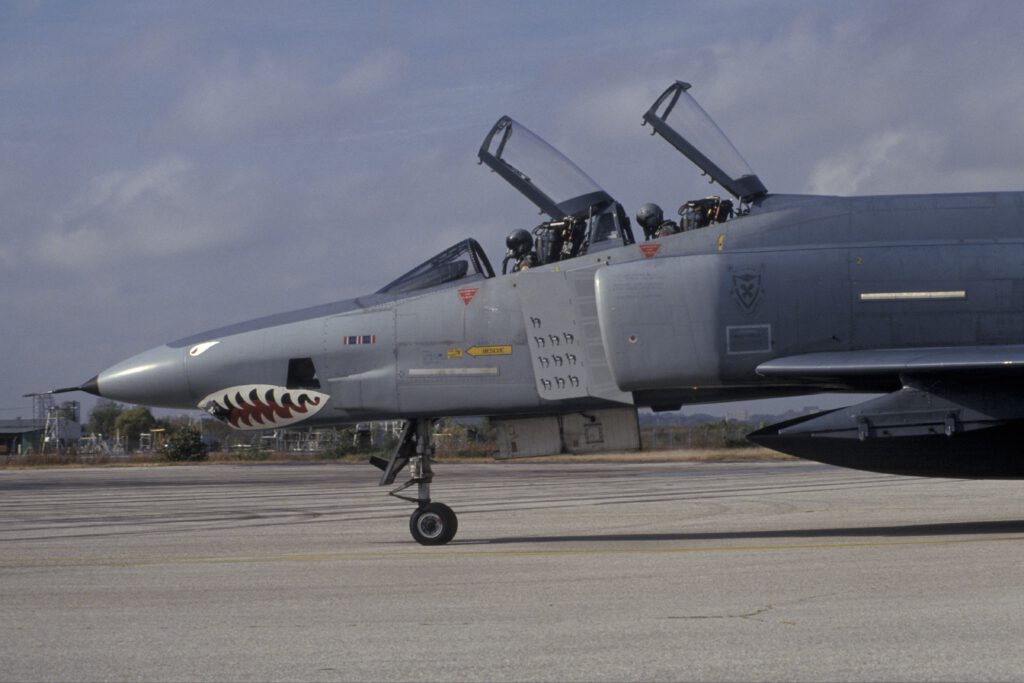
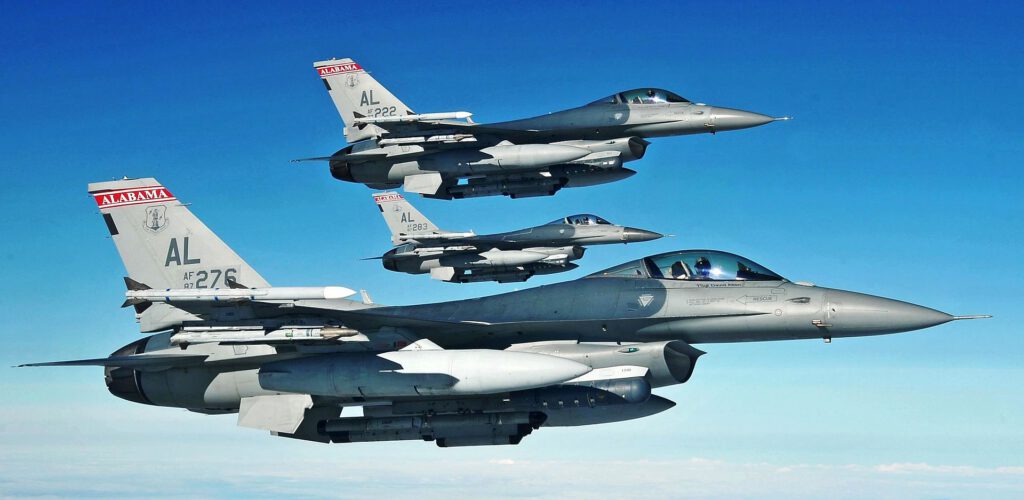
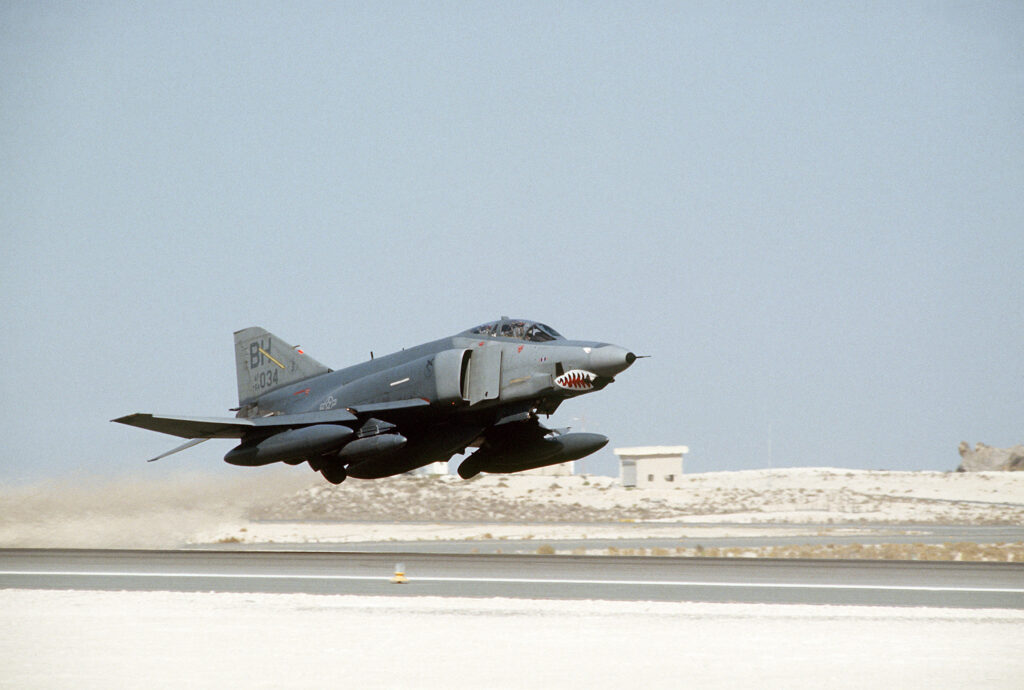
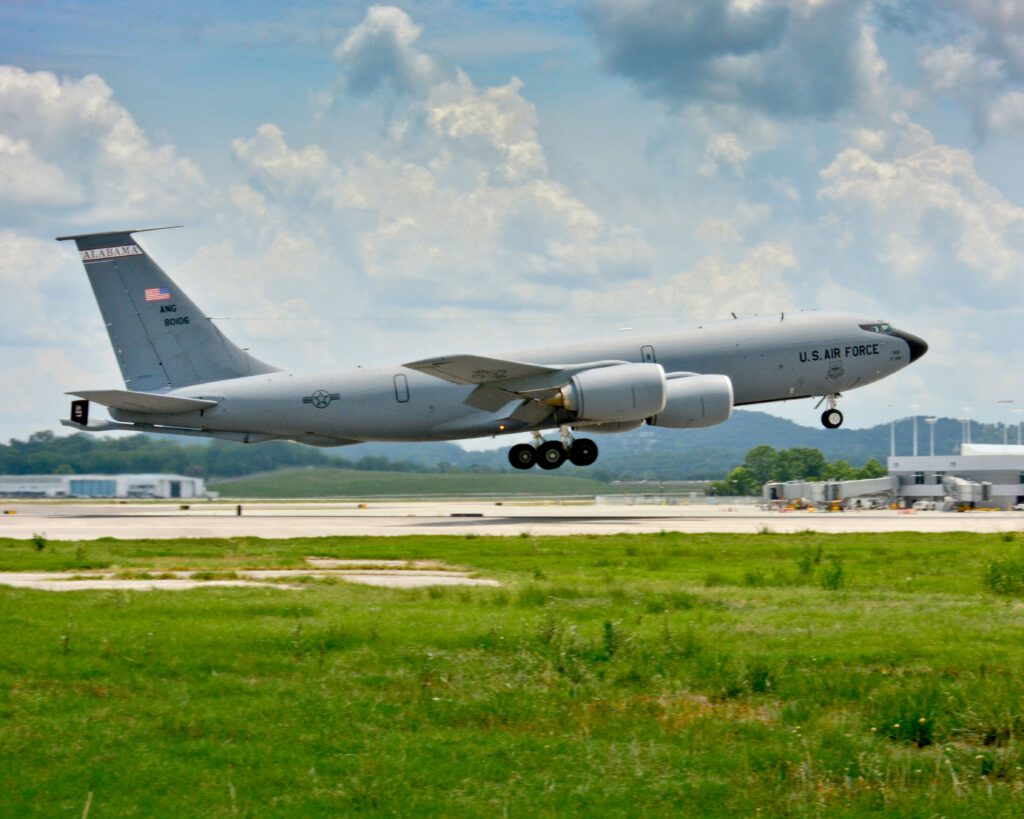
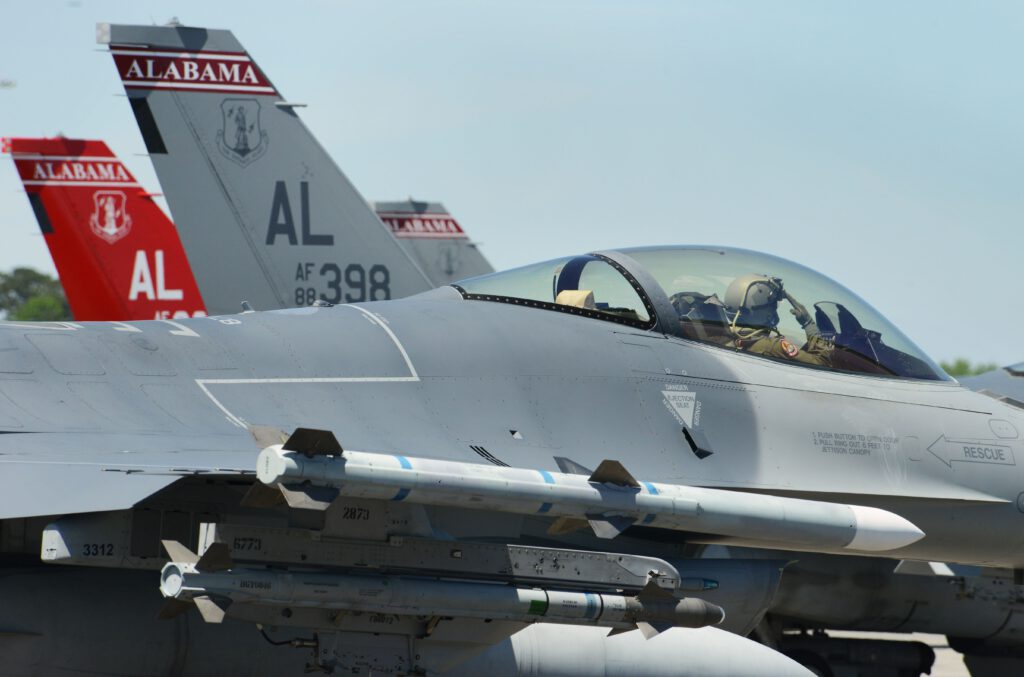

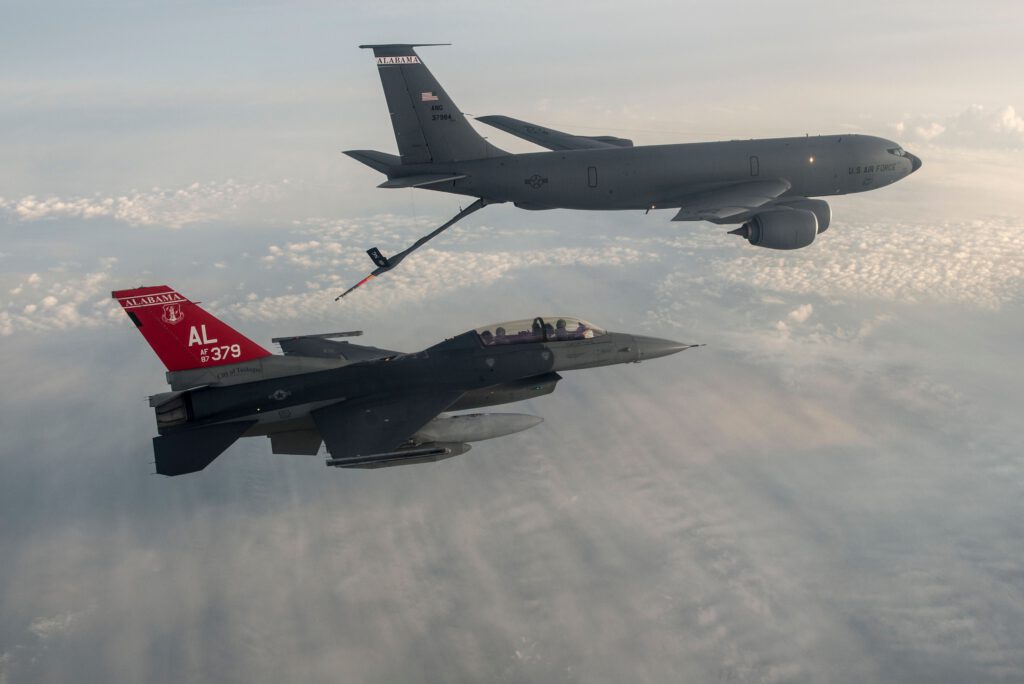
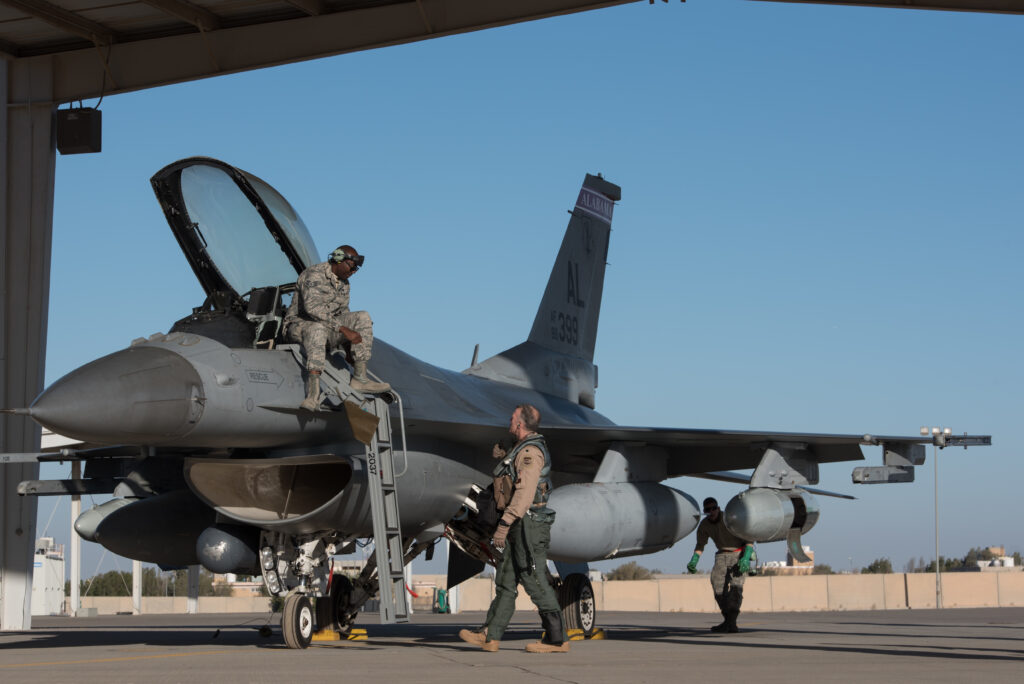
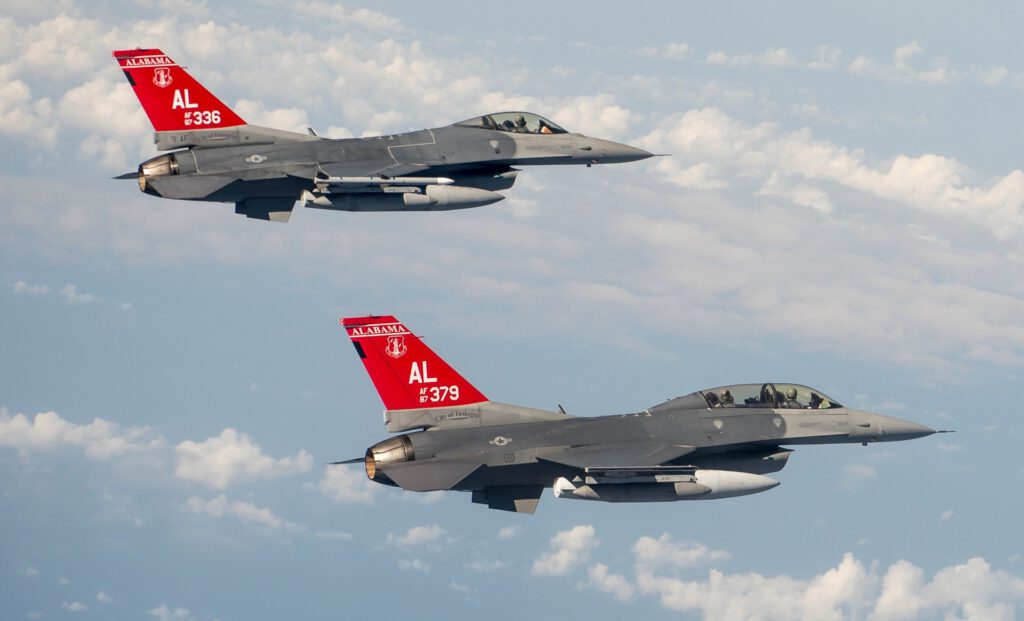
Alabama Air National Guard patches
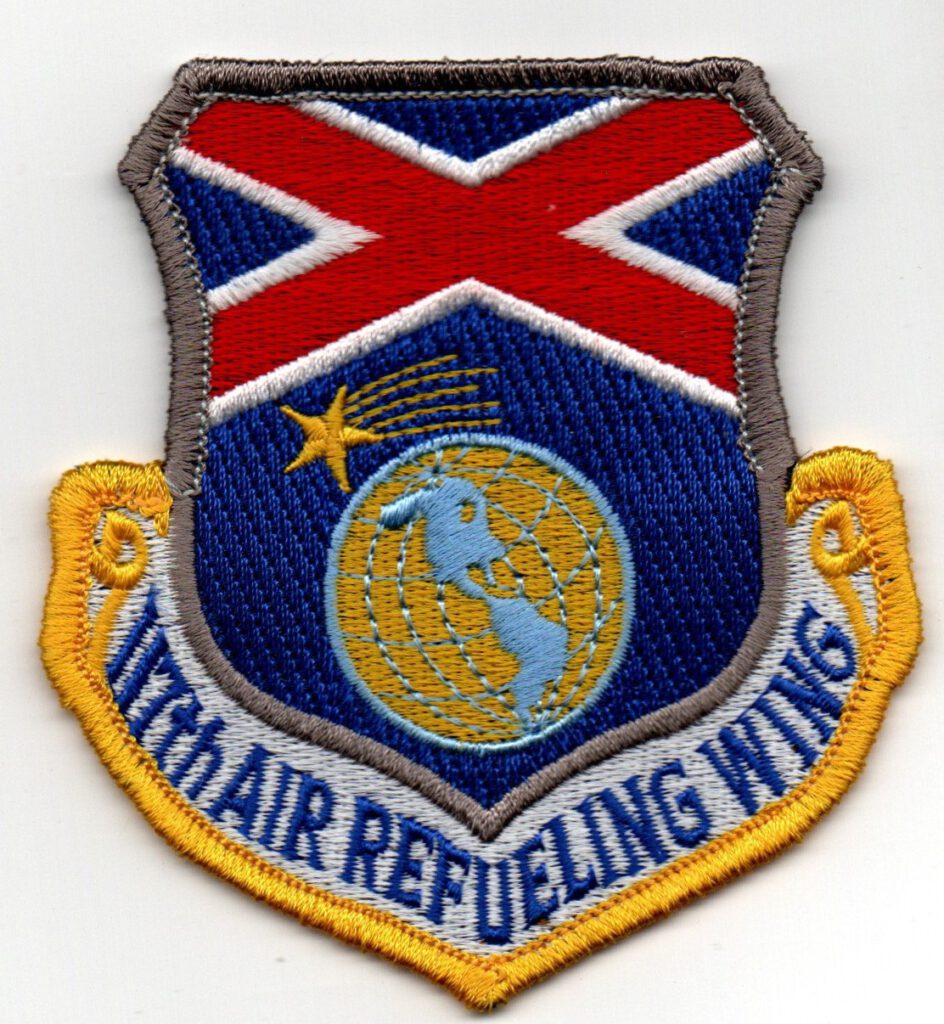
(under contruction)
